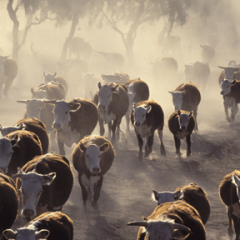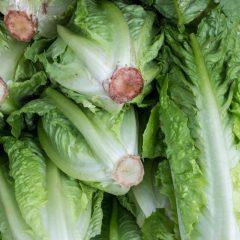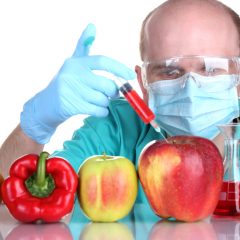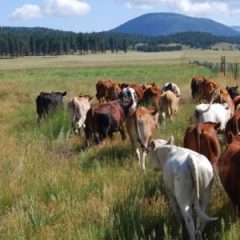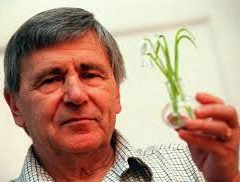Search results for “e. coli”:
A team of researchers from Washington and California have just published a paper revealing some interesting unintended consequences of conventional framing practices, with possibly important implications for food safety. Escherichia coli is a human-pathogenic bacteria that is commonly found in livestock and wildlife manure. It can end up on produce when manure is used for […]
Read More, References, Comment »
Thanks to Dan Flynn and Food Safety News for highlighting the likely causes of three E. Coli 0157:H7 outbreaks in romaine lettuce in 2019. These contamination episodes sickened at least 188 people. According to the Food and Drug Administration (FDA), cattle fecal matter from nearby feedlots caused all three of the 2019 E. Coli O157:H7 […]
Read More, References, Comment »
For the second time this year, romaine lettuce is being blamed for a large outbreak of illness caused by pathogenic forms of the bacteria Escherichia coli, or E. coli. The latest multi-state alert was released by the CDC on November 26, warning of an outbreak originating in the north and central coastal regions of California, likely with […]
Read More, References, Comment »
Historic posts are reprinted verbatim from their original source. Arpad Pusztai, Ph.D., June 2001 Scarcity of safety tests How can the public make informed decisions about GM foods when there is so little information about its safety? The lack of data is due to a number of reasons, including: It’s more difficult to evaluate the safety […]
Read More, References, Comment »
A thoughtful new piece published online by Aeon calls for a reboot of how the nation’s livestock farmers do business. Grassland 2.0 calls for our livestock farmers to also become grass farmers. It is a re-invention of a very old wheel: the idea that animals and pasture can work together as a kind of ecosystem. […]
Read More, References, Comment »
Frequently Asked Questions About the Study: Średnicka-Tober D. et al. (2016). “Composition differences between organic and conventional meat; a systematic literature review and meta-analysis.” British Journal of Nutrition, February 16, 2016. Authors: Dominika Średnicka-Tober, Marcin Barański, Chris Seal, Roy Sanderson, Charles Benbrook, Håvard Steinshamn, Joanna Gromadzka-Ostrowska, Ewa Rembiałkowska, Krystyna Skwarło-Sońta, Mick Eyre, Giulio Cozzi, Mette Krogh Larsen, […]
Frequently Asked Questions About the Study: “Higher PUFA and omega-3 PUFA, CLA, α-tocopherol and iron but lower selenium concentrations in organic milk: a systematic literature review and meta- and redundancy analyses.” February 16, 2016. British Journal of Nutrition Authors: Dominika Średnicka-Tober, Marcin Barański, Chris J. Seal , Roy Sanderson, Charles Benbrook, Håvard Steinshamn, Joanna Gromadzka-Ostrowska, Ewa Rembiałkowska, Krystyna […]
Historic posts are reprinted verbatim from their original source. This response to Dr. Morton by Arpad Pusztai was part of an ongoing dialogue in 1999 or 2000 over published papers on the risks posed by genetically engineered foods. Dear Dr Morton, We now seem to be playing silly games with numbers and other unfortunate deviations […]
Read More, References, Comment »
Historic posts are reprinted verbatim from their original source. Source: The Lancet, Volume 354, Number 9191, November 13, 1998 Allan Mowat Anthony J FitzGerald, Robert A Goodlad, Nicholas A Wright Peter Lachmann S. W. B. Ewen and A. Pusztai Sean Munro Brian Fenton et al D. C. Kilpatrick Brian Fenton, Kiri Stanley, Steven Fenton, Caroline Bolton-Smith Carl B […]
Read More, References, Comment »


